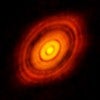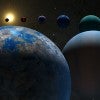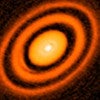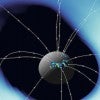Radiation from massive stars shapes nascent planetary systems
March 4, 2024
NASA has released the first stunning images of the Orion Nebula from the James Webb Space Telescope in a study in the journal Science that shows with unprecedented precision how massive stars impact the formation of planetary systems.
'Cool' kids in the cosmos may not be so unique
August 9, 2021
Rice University scientists show that "cool" stars like the sun share dynamic surface behaviors that influence their energetic and magnetic environments. Stellar magnetic activity is key to whether a given star can host planets that support life.
Nightside radio could help reveal exoplanet details
June 22, 2021
Rice scientists enhance models that could be used to detect magnetosphere activity on exoplanets. The Rice model adds data from nightside activity that could increase signals by at least an order of magnitude.









